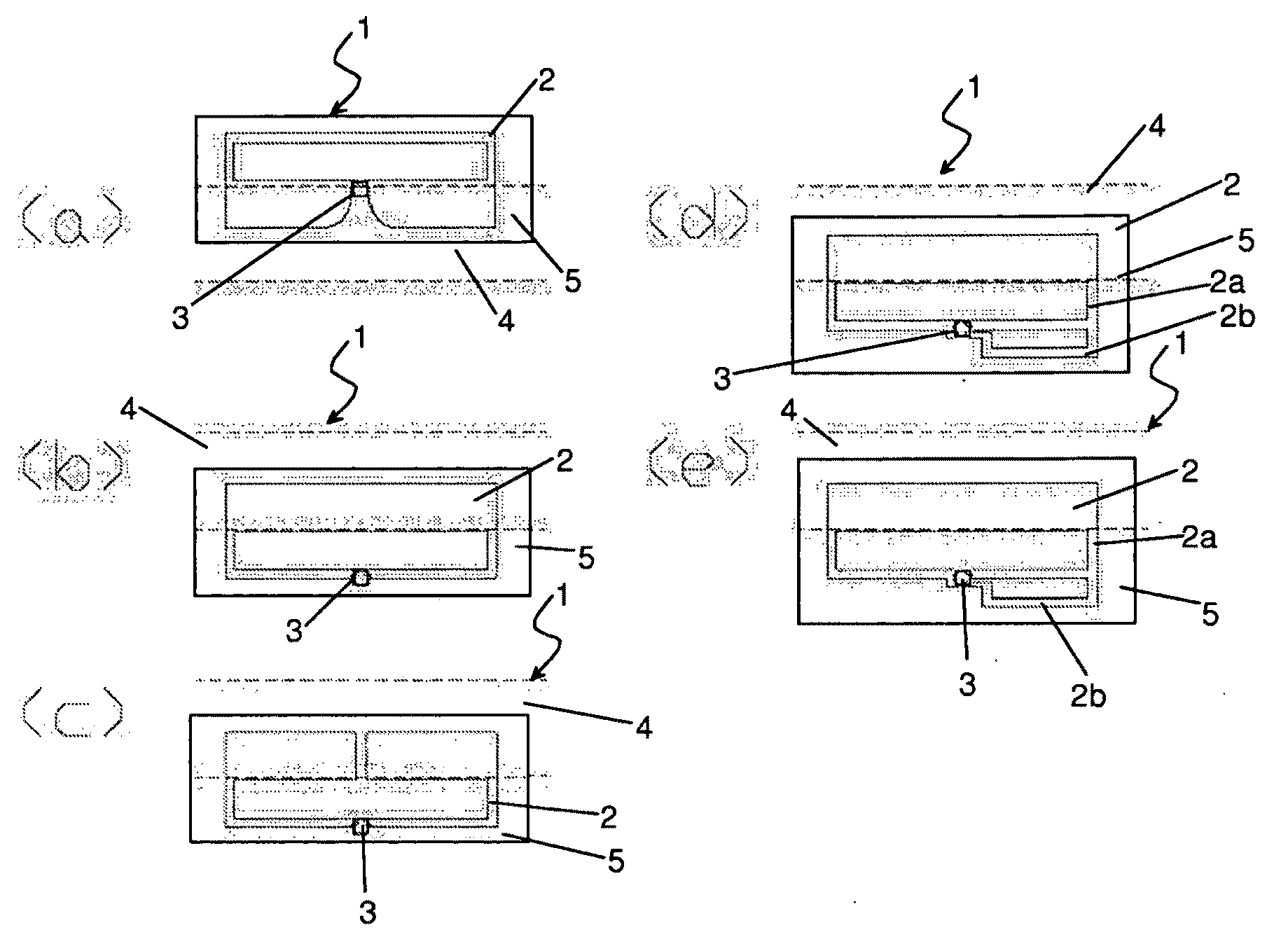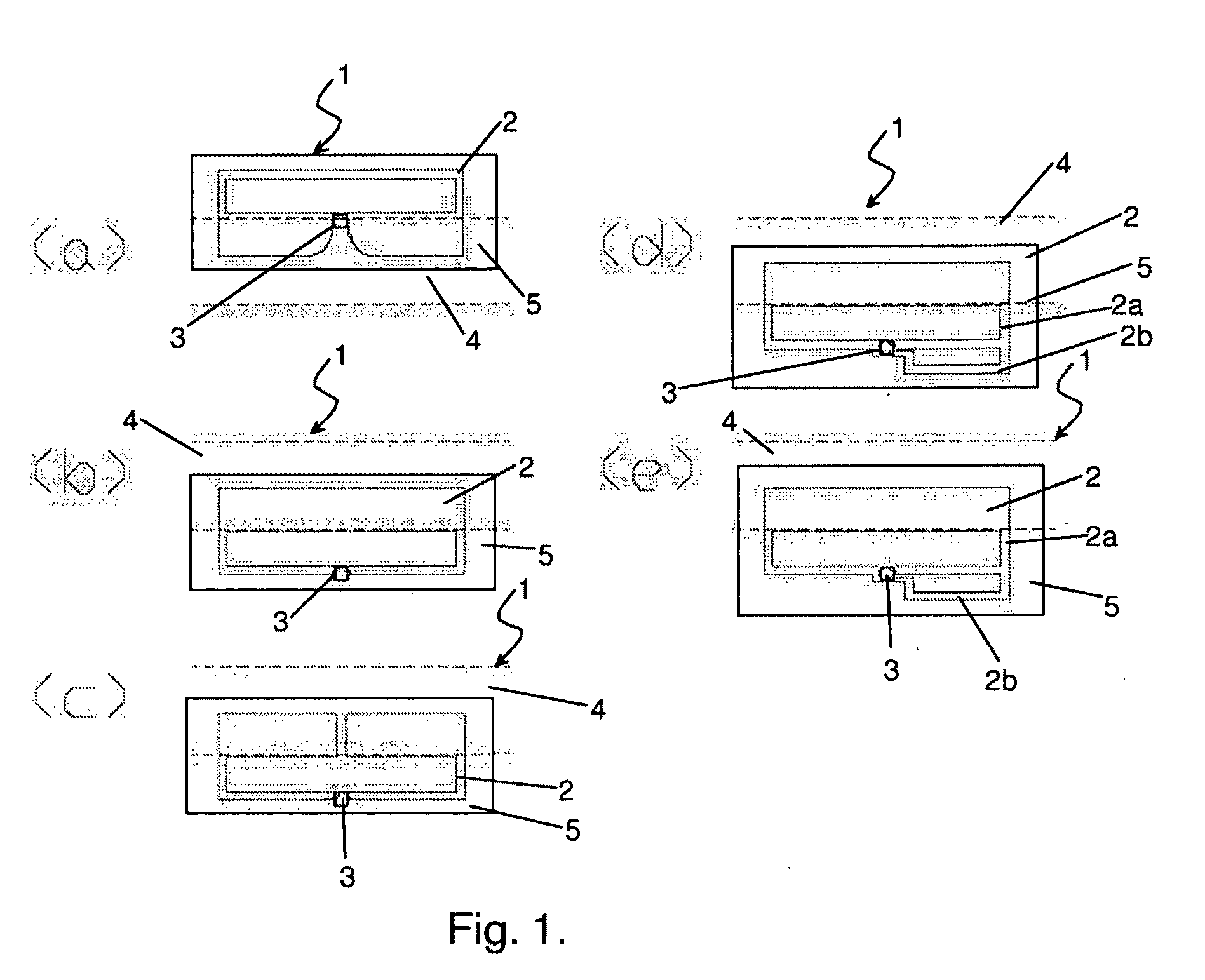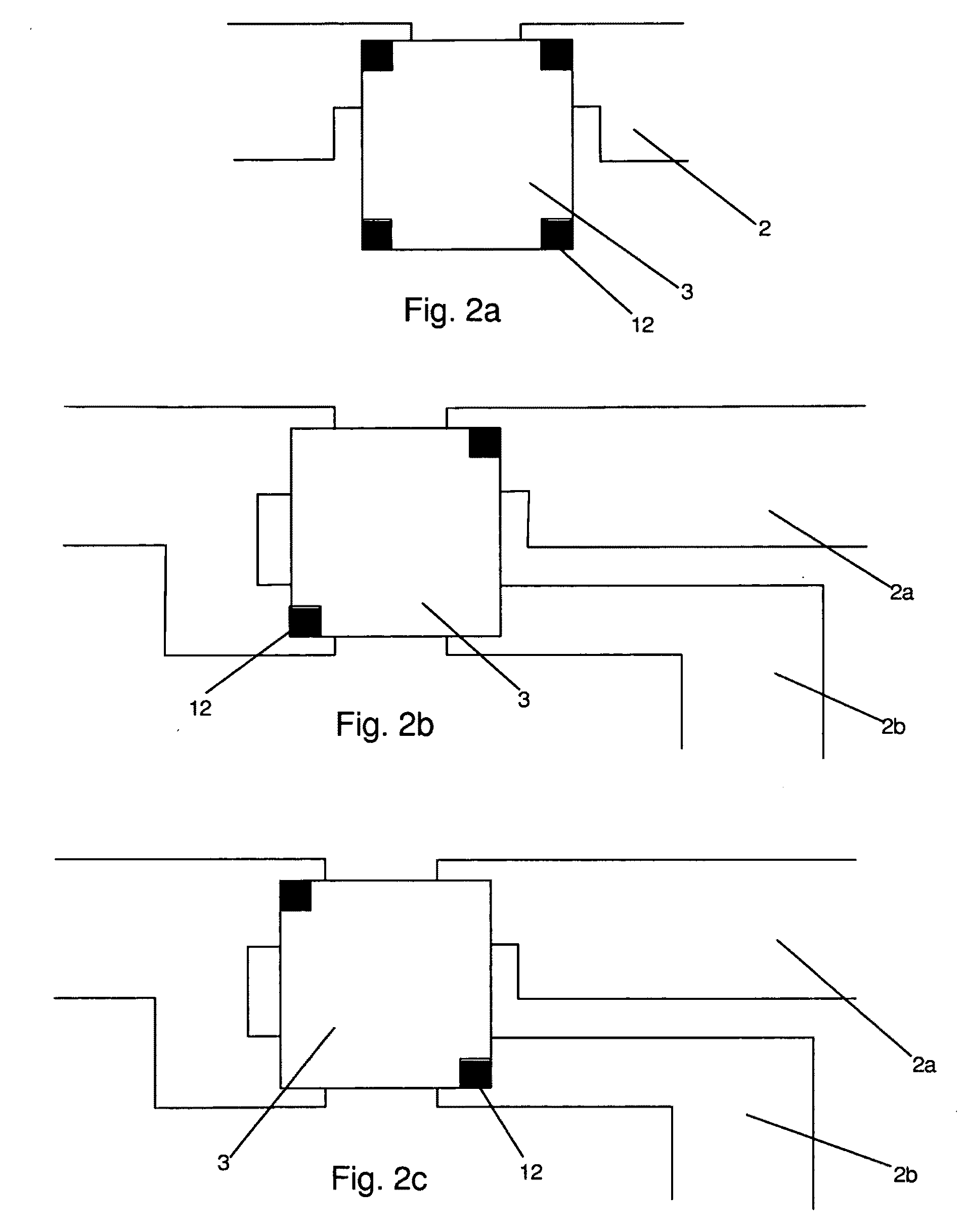Method For Manufacturing Products Compricing Transponders
a technology of transponders and manufacturing methods, applied in the direction of burglar alarms, mechanical actuation of burglar alarms, burglar alarms by hand-portable objects, etc., can solve the problem of expensive materials on the whole tag, and achieve the effect of improving the cost efficiency of uhf rfid transponder manufacturing
- Summary
- Abstract
- Description
- Claims
- Application Information
AI Technical Summary
Benefits of technology
Problems solved by technology
Method used
Image
Examples
Embodiment Construction
[0036]A transponder integrated in a label may comprise, for example, the following elements: a paper substrate, a structural module comprising an integrated circuit on a chip, and a impedance matching element, and an antenna strip, i.e. a antenna. The paper substrate may have a thickness of 50 to 80 μm and it may be coated with an acrylic pressure-sensitive or hot-melt adhesive. The size of the structural module may be for example 5 to 20 mm×5 to 20 mm. The substrate of the structural module may consist of PET but it can also be paper-based. When the substrate is paper-based, the conductors, for example the impedance matching element, can be printed by flexo, offset, screen or any other suitable printing technique. As one can understand, the size of the structural module and the thickness of the paper substrate can naturally be different from what has been described above.
[0037]A package transponder can either be used as the above-mentioned transponder or the package surface can act...
PUM
| Property | Measurement | Unit |
|---|---|---|
| thickness | aaaaa | aaaaa |
| size | aaaaa | aaaaa |
| distance | aaaaa | aaaaa |
Abstract
Description
Claims
Application Information
 Login to View More
Login to View More - R&D
- Intellectual Property
- Life Sciences
- Materials
- Tech Scout
- Unparalleled Data Quality
- Higher Quality Content
- 60% Fewer Hallucinations
Browse by: Latest US Patents, China's latest patents, Technical Efficacy Thesaurus, Application Domain, Technology Topic, Popular Technical Reports.
© 2025 PatSnap. All rights reserved.Legal|Privacy policy|Modern Slavery Act Transparency Statement|Sitemap|About US| Contact US: help@patsnap.com



